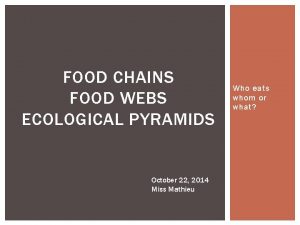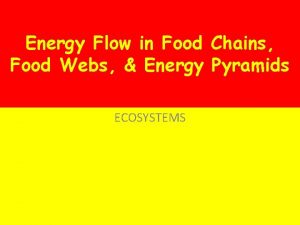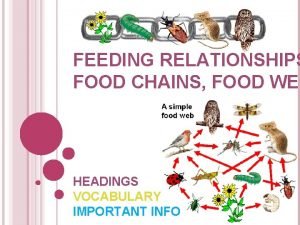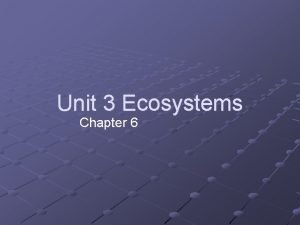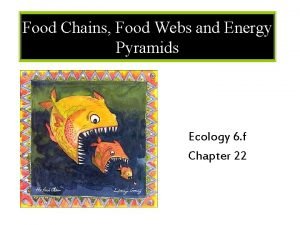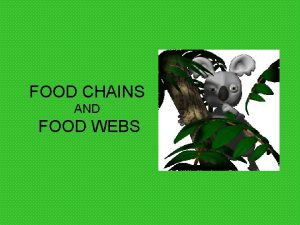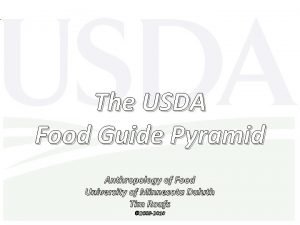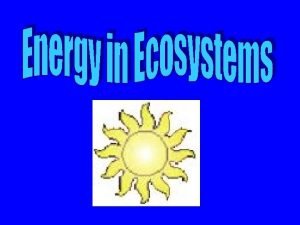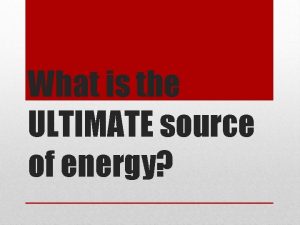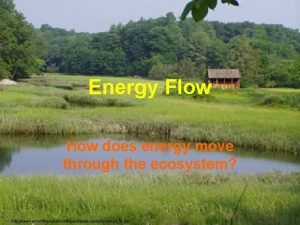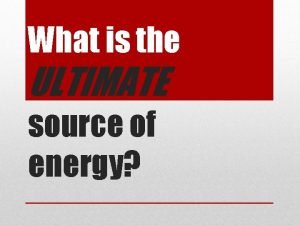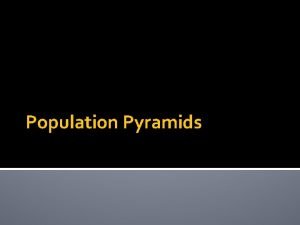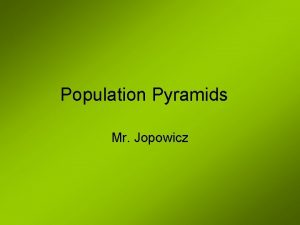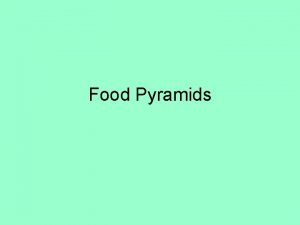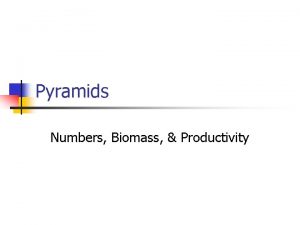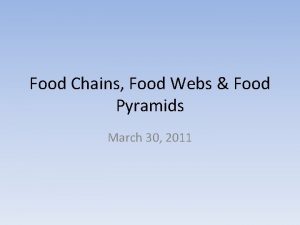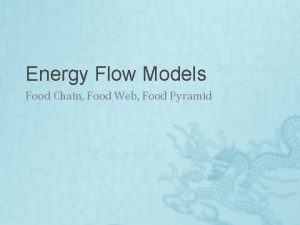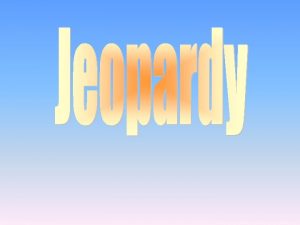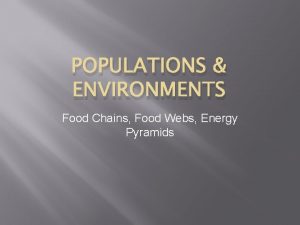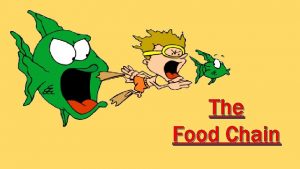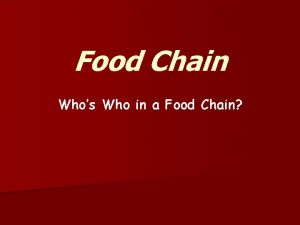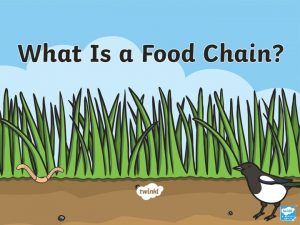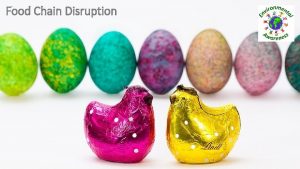Energy Pyramids Instructions Pick a food chain and




















- Slides: 20

Energy Pyramids – Instructions Pick a food chain and go to page 72 -73 in your textbook (4 extras) Trophic Level – using the appropriate term Example – drawing (include word if not clear) Side three � Numbers – how many organisms? (given for you) � Energy (Joules – unit of energy) and Biomass (total mass for one trophic level) – you are given base level, how will you find the rest? Color, Cut, Fold, Affix, and you’re done!

ld he re (numbers) 6000 250 40 3 10, 000 n kg (biomass) 10, 000 J (energy) 1, 000 n kg 10 n kg 1, 000 J 10 J e er th cu re he fo ld fo Flow of energy: Example Pyramid ld fo re he Example food chain MAY NOT USE this one

CLIMATE, TERRESTRIAL BIOMES AND AQUATIC ECOSYSTEMS

Latitude and Climate Weather – condition of the atmosphere at a given time v. Climate – the average weather conditions in an area � Temperature and precipitation Climate is affected by latitude (distance between the equator and any point N-S), ocean currents, and land masses (Shape and elevation) � Why? Angle of the sun. � One factor that influences distribution of biomes

How are humans affecting climate? Example: global warming via the Greenhouse Effect

Tundra Below polar ice caps No trees � Frozen soil (permafrost) � Minimal precipitation

Boreal Forest or Taiga South (or North) of Tundra Evergreen forest – no permafrost Short summers

Temperate Forest Broadleaved, deciduous trees Four seasons Woodland animals (bears – top predator)

Temperate Shrubland or Chaparral Less rainfall than temperate forests Dominated by shrubs— adapted to dry environment E. g. California

Temperate Grassland Fertile soils – to support grasses Drought, grazers, and fires prevent it from becoming a forest Example: prairie

Desert Evaporatio n exceeds precipitatio n Organisms adapted to this: succulents (cacti), insects, lizards, etc.

Tropical Savanna Grasses and scattered trees Minimal precipitatio n Zebras, lions, etc.

Tropical Rain Forest Warm temperature s, lots of rain Highest species diversity Vegetation: canopy v. understory

Other Terrestrial Areas Mountains – climate changes as altitude changes � Communities resemble that of the tundra at the top Polar regions – cold all year, covered in ice

Aquatic Ecosystems - Overview Freshwater Transitional (“brackish”) Marine (salty)

Freshwater Ecosystems Rivers and streams – water flows in one direction, carries sediment, cause erosion � Plants and animals must be able to withstand water currents Lakes and ponds – standing water, vary greatly in size � Eutrophic (nutrient-rich) v. Oligotrophic (nutrient- poor) What effect would this have on the organisms present? � Seasonal patterns (next slide)


Transitional Ecosystems Brackish water – between salty and fresh Wetlands – marshes, swamps, and bogs � Very productive environments (nutrients) � Often anoxic, usually pretty salty (adaptations) Estuaries – where salt water meets fresh!

Marine Ecosystems – Salt Water Intertidal – where ocean meets land � Wave and tide action � Persistent organisms Coastal ocean and coral reefs � Very diverse (next slide) � Subject to human disturbances Open ocean � Photic zone – where light reaches (up to 100 meters!) � Phytoplankton/algae

 Sequence of food chain
Sequence of food chain Food chains, food webs and ecological pyramids
Food chains, food webs and ecological pyramids Food chains food webs and energy pyramid worksheet
Food chains food webs and energy pyramid worksheet Food webs and energy pyramids
Food webs and energy pyramids As nutritional energy passes through the food chain, energy
As nutritional energy passes through the food chain, energy Food chain amazon rainforest
Food chain amazon rainforest Primary consumer
Primary consumer Food chain and food web
Food chain and food web Difference between food chain and food web
Difference between food chain and food web The forest food chain
The forest food chain Food web words
Food web words Food pymarid
Food pymarid Ecological pyramid of energy
Ecological pyramid of energy What secondary consumer eats zooplankton
What secondary consumer eats zooplankton Food pyramid animals
Food pyramid animals What is energy flow in a food chain
What is energy flow in a food chain What is the ultimate source of energy for life on earth?
What is the ultimate source of energy for life on earth? Vtaide
Vtaide Secondary consumer
Secondary consumer Food web producers
Food web producers Food chain energy flow
Food chain energy flow

